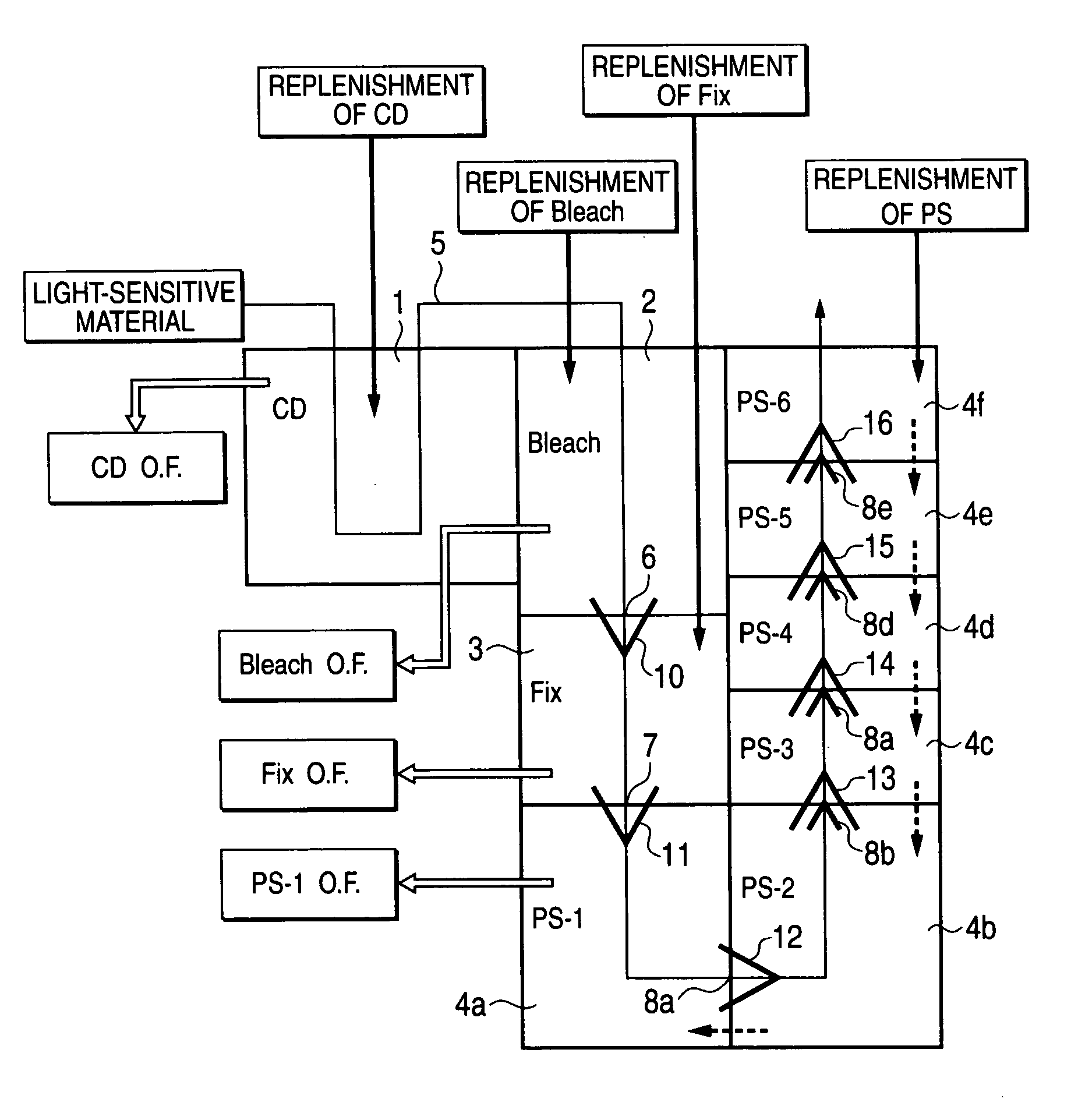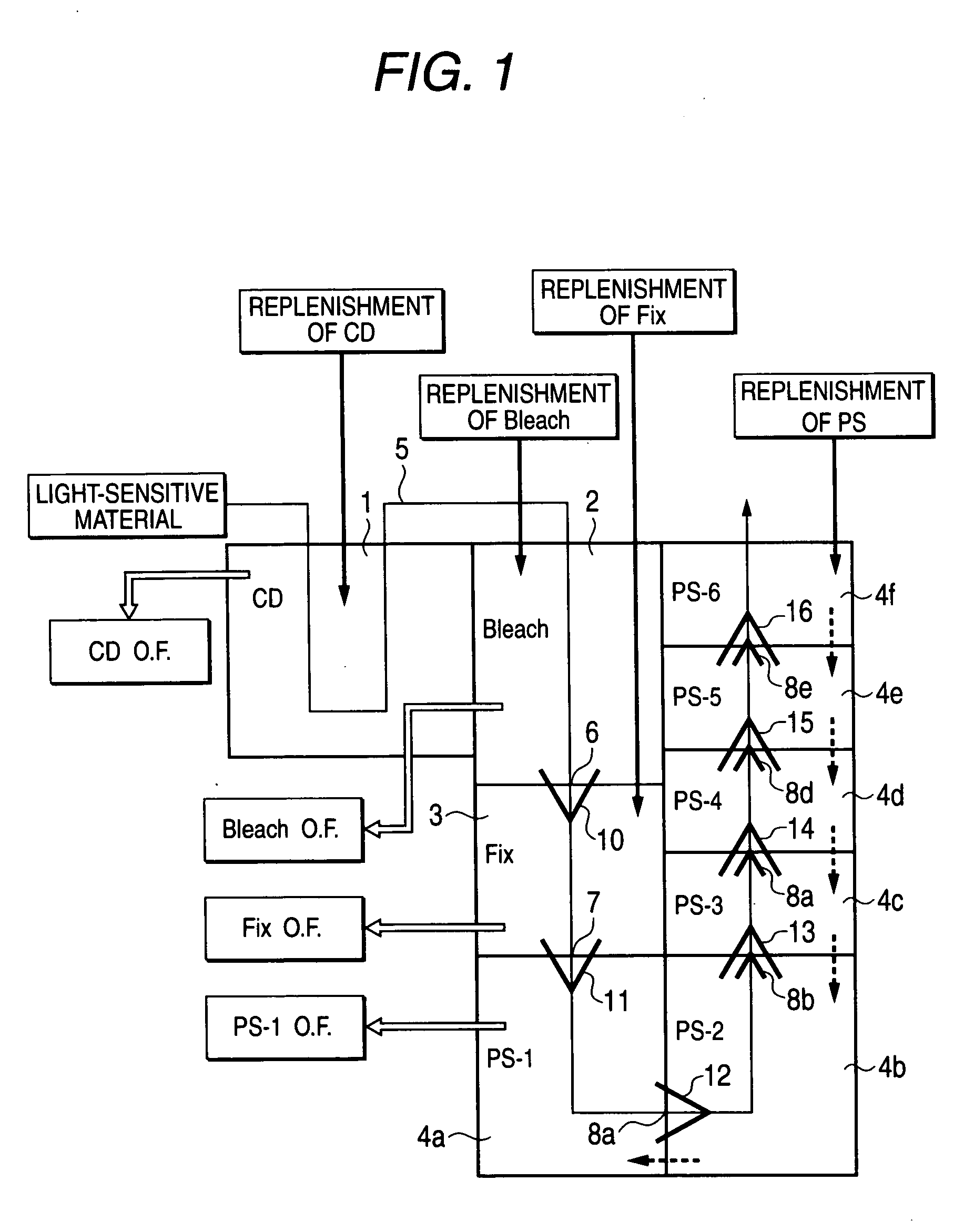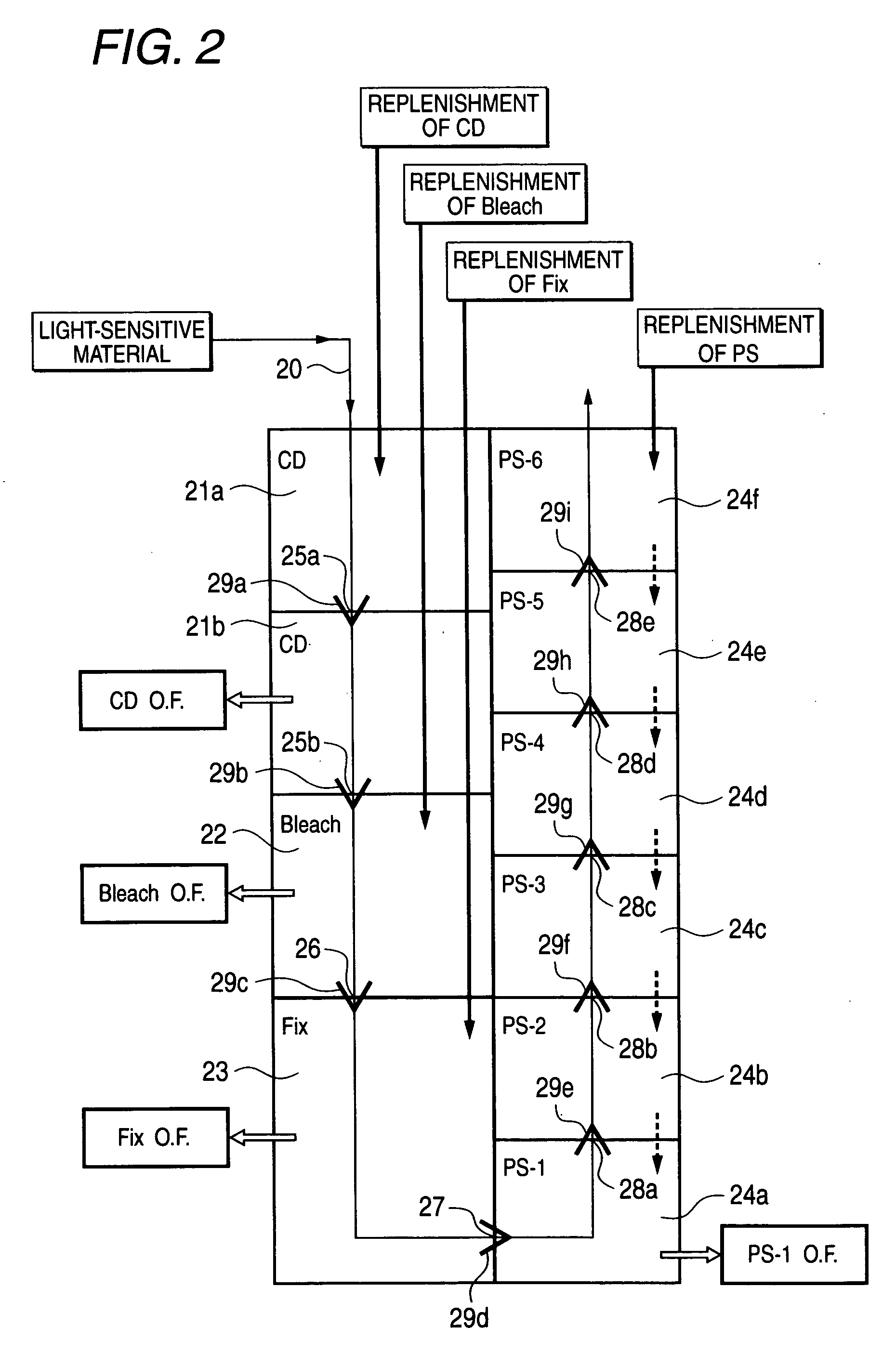Development processing apparatus for silver halide color paper and method for processing silver halide color paper
a technology of development processing and color paper, which is applied in the field of apparatus for development processing a processing method of silver halide color paper, can solve the problems of limited customer satisfaction with such images, maintenance of gas-touched nozzles, and shorten processing time, so as to reduce the production cost of the apparatus and reduce the size of the processing apparatus. , the effect of shortening the processing tim
- Summary
- Abstract
- Description
- Claims
- Application Information
AI Technical Summary
Benefits of technology
Problems solved by technology
Method used
Image
Examples
example 1
Light-Sensitive Materials Used for the Tests
Preparation of Emulsion BH-1 for Blue-Sensitive Layer
[0178] High silver chloride-content cubic grains were prepared by simultaneously adding silver nitrate and sodium chloride to a deionized distilled water containing deionized gelatin under stirring. During this preparation step, Cs2[OsCl5(NO)] was added from the point where addition of silver nitrate reached 60% to the point where addition of silver nitrate reached 80%. Potassium bromide (1.5 mol % per mol of finished silver halide) and K4[Fe(CN)6] were added from the point where addition of silver nitrate reached 80% to the point where addition of silver nitrate reached 90%. K2[IrCl6] was added from the point where addition of silver nitrate reached 83% to the point where addition of silver nitrate reached 88%. K2[IrCl5(H2O)] and K[IrCl4(H2O] were added from the point where addition of silver nitrate reached 92% to the point where addition of silver nitrate reached 98%. Potassium io...
example 2
[0203] Example 2 was prepared in the same manner in Example 1 except for changing the bleaching time of 6 see in development processing test to 5 sec. For the purpose of comparison, Example 2 was compared with Comparative Example 1 and Comparative Example 2 in the same way. The result was the same as in the Example 1, and any difference could not seen in the result of the invention between the bleaching time of 6 sec and 5 sec in development processing test.
[0204] In the processor shown in FIG. 1 wherein the processing of the invention is conducted, it was found that there remained almost no residual silver in the black high-density area in the rapid processing, thus desilvering being completed, and that the yellow density (stain density) of the white area was at a low level, with the concentration of preservative in the rinsing solution 1 being at a high level. Thus, it is seen that there is no problem at all with respect to stability of the rinsing solution.
[0205] Thus, it is se...
PUM
| Property | Measurement | Unit |
|---|---|---|
| processing time | aaaaa | aaaaa |
| oblique angle | aaaaa | aaaaa |
| oblique angle | aaaaa | aaaaa |
Abstract
Description
Claims
Application Information
 Login to View More
Login to View More - R&D
- Intellectual Property
- Life Sciences
- Materials
- Tech Scout
- Unparalleled Data Quality
- Higher Quality Content
- 60% Fewer Hallucinations
Browse by: Latest US Patents, China's latest patents, Technical Efficacy Thesaurus, Application Domain, Technology Topic, Popular Technical Reports.
© 2025 PatSnap. All rights reserved.Legal|Privacy policy|Modern Slavery Act Transparency Statement|Sitemap|About US| Contact US: help@patsnap.com



